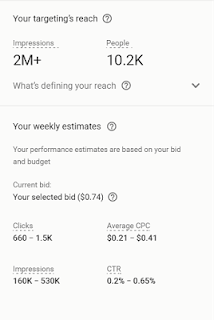Today, we’d like share some updates on how we’re using the power of automation and machine learning to create sustainable solutions that drive greater advertising performance and revenue for our partners.

Smarter yield through machine learning
Programmatic buying has created many opportunities for publishers to maximize revenue, but optimizing manually puts publishers at a disadvantage when programmatic buyers are constantly investing in smarter bidding technology. That’s why we’ve been applying optimization and machine learning techniques developed over the years at Google to help publishers make more money from programmatic demand. In fact, since 2016 we have run hundreds of experiments resulting in over 50 improvements to our auction algorithms. These optimizations have generated 15% more revenue for publishers using DoubleClick Ad Exchange.Actionable insights with Opportunities & Experiments
Data can be an important input for making better decisions, but the best yield management strategies also include constant testing and measurement. To make this process easier, we recently launched a new Opportunites & Experiments tool that puts publishers in control of Google intelligence.Publisher opportunities and experiments in DoubleClick for Publishers and DoubleClick Ad Exchange provide customized, actionable and quantifiable suggestions on how to increase yield. With a few clicks, publishers can safely run an experiment, and if they like the results, accept the change to apply it across their account. Publishers including The Soul Publishing in Russia, TV2 in Norway, and Match.com in the U.S. have grown revenue with Opportunities and Experiments.
"Opportunities and experiments lets us bypass the heavy, manual labor part of the yield optimization process. It lets us skip straight to projecting results of possible changes and testing a yield hypothesis against a control test group in a safe way. Essentially, the feature helps us find the test cases worth our time automatically, letting us focus on increasing yield and revenue,” says Mikaela Rimaila, Programmatic Manager, TV2. "Personally I’d love to do all my yield optimization through this feature, as it adds a safety layer to rule changes, easily giving us the chance to compare and analyse the effects of the test.”
"Opportunities and experiments in AdX has helped streamline our yield optimization process and boosted our indirect revenue. We receive customized suggestions to increase our yield, such as floor adjustments, and have seen significant gains as a result."
- Gregg Murphy Senior Director, Revenue Operations, Match.com
Bringing Exchange Bidding to more partners demand without compromising user experience
We’ve made a lot of progress since announcing our test of Exchange Bidding last year, and today we’re happy to announce the Open Beta of Exchange Bidding, available for publishers using DoubleClick for Publishers* globally. Exchange Bidding helps publishers bring more of their programmatic demand together into a unified auction and the results have been impressive. On average Exchange Bidding is delivering double-digit programmatic revenue uplift, with some publishers seeing programmatic lift as high as 40% with minimal impact to user experience. Today, 100+ publishers can choose from 7 trusted third party exchanges, including our new partners, COMET, OpenX and Sovrn.
On average Exchange Bidding is delivering double-digit programmatic revenue uplift, with some publishers seeing programmatic lift as high as 40% with minimal impact to user experience. Today, 100+ publishers can choose from 7 trusted third party exchanges, including our new partners, COMET, OpenX and Sovrn. "We've been working with Google on the development of Exchange Bidding for several months now and while it's still early, we are pleased with the level of partnership and transparency we have seen from the Google team. While there are still issues to be resolved and the product is very complex, their efforts have resulted in real and positive changes to the Exchange Bidding product. Based on our experience so far, and the excellent results we have seen to date, we are optimistic that we can deliver material value to our publisher partners via Exchange Bidding." - Jason Fairchild, Co-Founder and Chief Revenue Officer, OpenX
Driving sustainability in the future
Looking back at the results from our latest yield management improvements shows us what’s possible, but I think we can do more. We’ve shown how machine learning can deliver more value to publishers, and in the future, we’ll continue to invest in it to deliver even more innovations. Also, the work our teams have been doing on server side technologies have revealed more opportunities to improve publisher revenue by taking advantage of synergies across our products. Publishers using DoubleClick for Publishers and DoubleClick Ad Exchange may have noticed our first step in this direction, a unified UI for both platforms. Moving forward you should expect more innovations like these to increase publisher yield.| Posted by Jonathan Bellack Director of Product Management, Publisher Platforms |







